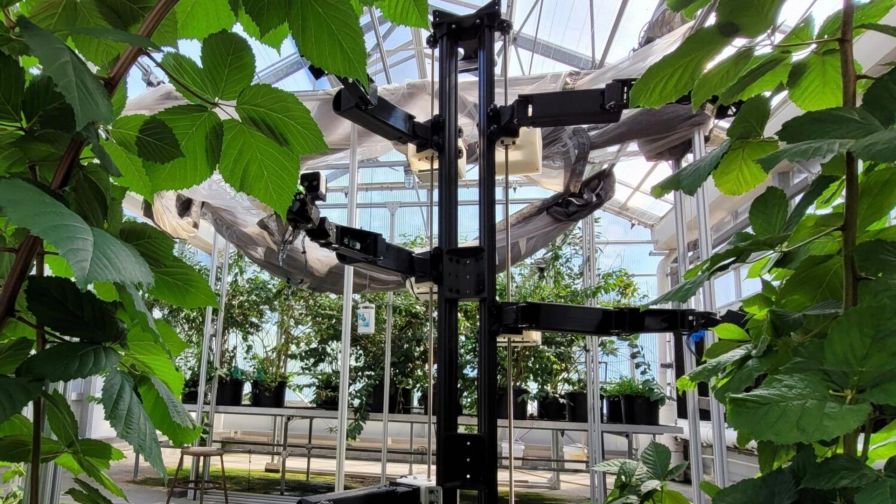Biocontrols: A Practical Option for Cannabis
If there was a take home message from the cannabis session at the Biocontrols USA West 2017 Conference & Expo, held in Reno, NV, on March 2-3, it was that cannabis is a gray area in regard to chemical pest management. With virtually no labeled traditional chemistry available, more cannabis growers are looking to biocontrols for solutions.
Some of the discussions during the cannabis session centered on the challenges cannabis growers have with accessing and using chemical products for pest control. Regulations for the use of chemical products vary from state to state, and the list of acceptable products is often too short for growers liking. It is also becoming more common to test cannabis products for residues. If a product tests positive, dispensaries might reject it.
“Some dispensaries set their own rules for which residues are allowed, but in the very near future, the government my regulate which products are acceptable,” says Robert Starnes, Senior Superintendent of Agriculture at the University of California, Davis (UC Davis) in the Department of Entomology and President of Shale Peak Horticulture. “Even if a product is generally regarded as safe but banned from cannabis use, these residues will be discovered and the product rejected for sale.”
While these roadblocks and others challenge cannabis growers, biocontrols may present a golden learning opportunity.
Dr. Raymond Cloyd, a Professor in the Department of Entomology at Kansas State University, says the industry could overlook its chance to learn how to make biocontrols more functional if it gets distracted by focusing too much on the complexities and regulatory issues surrounding chemical pesticides.
“We know a lot about biologicals with other cropping systems,” Cloyd says. “This is a great opportunity to succeed using a biological control program to regulate specific insect and mite pests.”
Accurate Education, Real-World Trials Vital to Successful Pest Control
While more cannabis growers are embracing biocontrol use, others find it a challenge to implement these products in a program because they lack education of pest lifecycles and the principles of how resistance is acquired.
“Cannabis growers want to use biocontrols, but there are still many barriers to overcome in how to use these products correctly, where to buy them at reasonable prices, and how to get them on a timely basis,” says Bill Weigle, a horticultural consultant and retired greenhouse manager from Humboldt State University, who works with cannabis growers in California.
The problem isn’t that growers looking for advice on how to tackle these problems require more sources to find information. Often, it’s because reliable information is hard to come by in an industry with a reputation for relying on word of mouth and turning to snake-oil solutions.
The problem is two-fold: How can cannabis growers know they are using high-quality products, and how do they know they are getting good information?
Entomologist Suzanne Wainwright-Evans, Owner of Buglady Consulting, says when growers go to the wrong source for advice, they may end up misidentifying pests or spending their hard-earned money on products they don’t need. At the moment, no one is scrutinizing what information comes out about pest management for cannabis crops. Real-world trials are needed, and they are difficult to do, she says.
“Cannabis growers need to be careful about who they talk to,” she says. “My advice is to find a reputable source of information. Look at that person’s background, experience, and education. Ask yourself what gives them the authority to offer you advice. And make sure the science is there to back up their claims.”
How You Can Help
Starnes says he advises biopesticide manufacturers to work with groups like the IR-4 project. According to its website, since 1963 the IR-4 project has been a major resource for supplying pest management tools for specialty crop growers by developing research data to support new EPA tolerances and labeled product uses.
“Any product that makes a pesticide claim must be labeled by the EPA, and groups like IR-4 can help register products, usually in a quicker amount of time and for less money,” Starnes says.
And there’s something else manufacturers and growers can do to help pull down the barriers to cannabis research — reach out to universities.
In August of 2016, the DEA ended its monopoly on cannabis production for medical research, allowing researchers and drug companies to use cannabis grown in places other than its DEA facility at the University of Mississippi.
“It was illegal for universities to grow cannabis on campus, but recently the DEA announced it would allow universities to apply for a permit to grow cannabis,” Starnes says. “Many universities are hesitant to apply, but inquiries from the public and the business sector would show a need and possibly help move things forward.”
The Biocontrols Conference & Expo Series Expands to Four Events
The Biocontrols Conference & Expo, presented by Meister Media Worldwide, gives growers and pest control advisers the opportunity to explore new products, discuss their concerns, and learn more about the rapidly changing developments related to biocontrol technology.
Meister Media Worldwide, publisher of Greenhouse Grower, American Vegetable Grower, American Fruit Grower, Western Fruit Grower, and Florida Grower, announced during its most recent event in March that the Biocontrols Conference & Expo will be expanding into a series of four events in 2017.
In addition to the just-completed USA West event, Meister will host the Biocontrols USA East 2017 Conference & Expo in Orlando, FL, October 12-13. This event will focus on the unique needs of growers in the eastern half of the U.S., and will be held in conjunction with BPIA. Two international events will also launch this year, including Biocontrols Africa in Cape Town, South Africa in July, and Biocontrols Mexico in Guadalajara in September. For more information, visit BiocontrolsConference.com.











